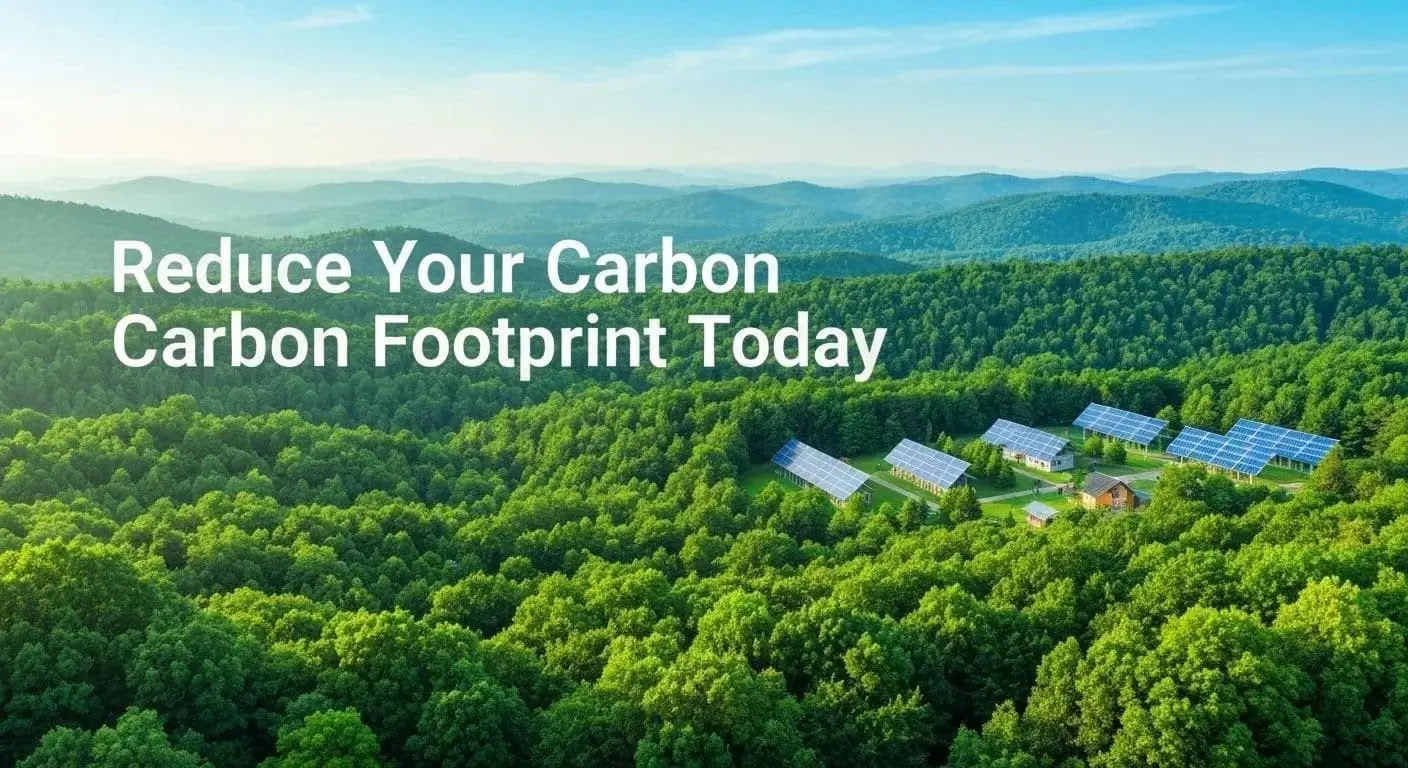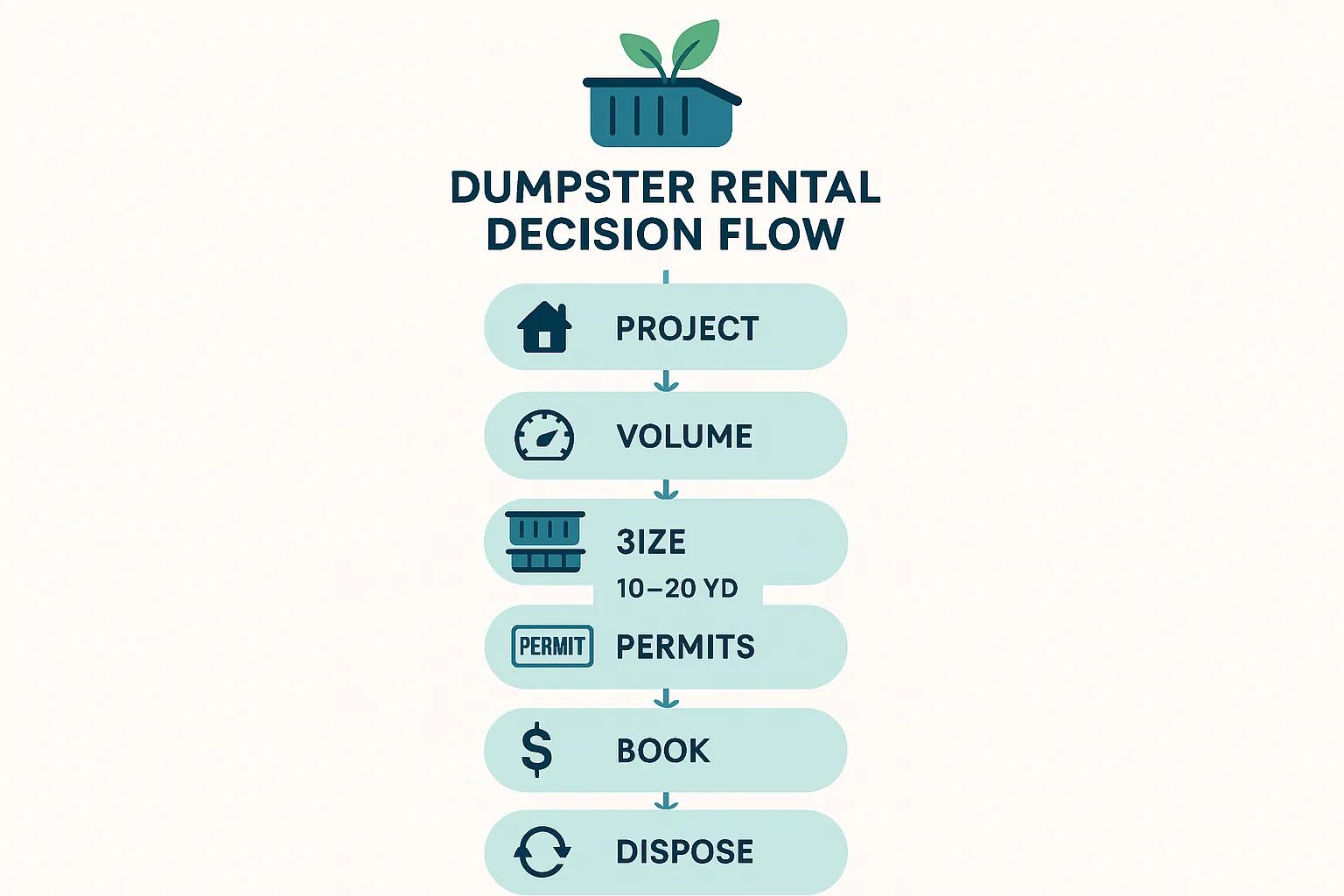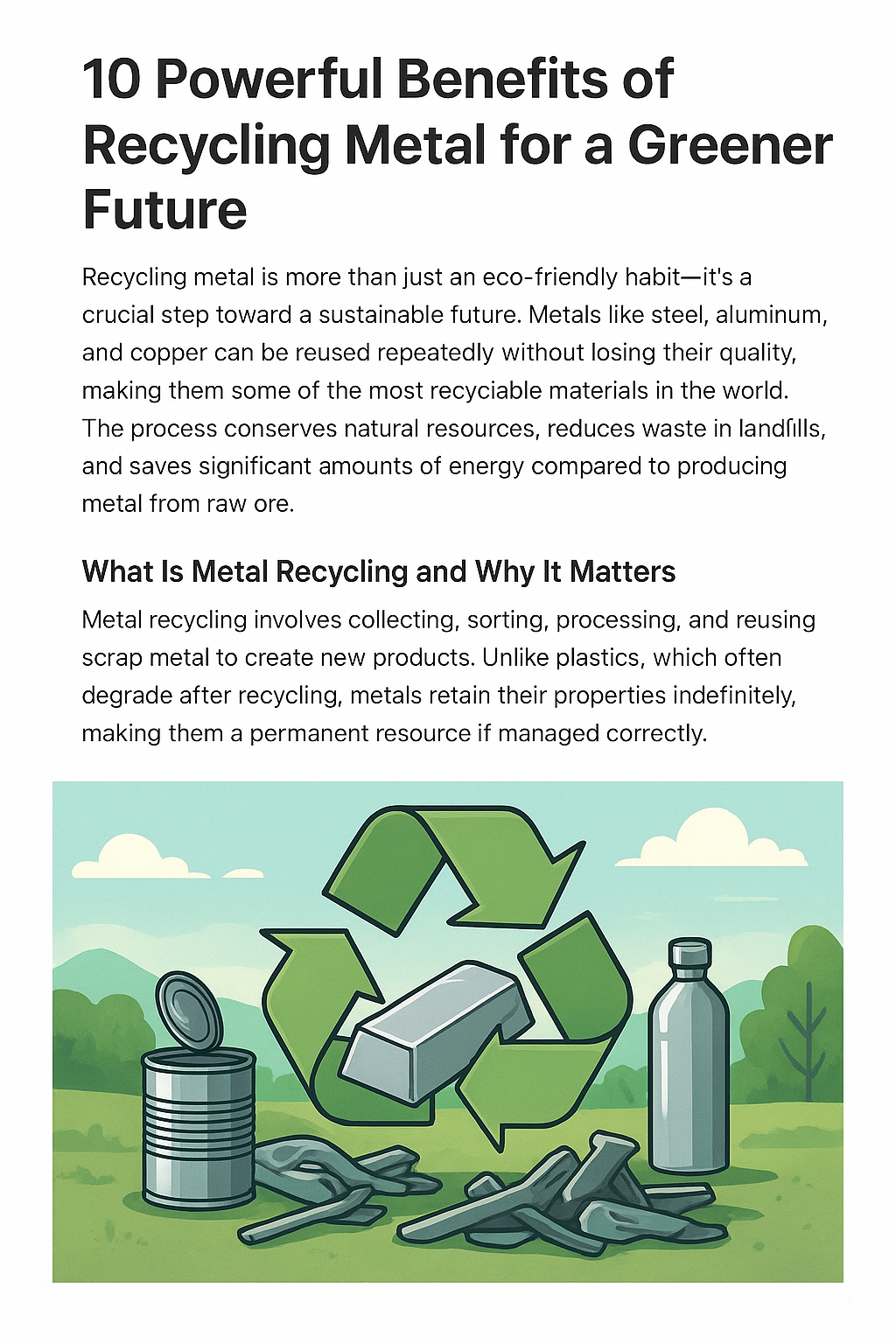
10 Simple Ways to Slash Your Home's Carbon Footprint Today with Smart Energy and Eco-Friendly Tips
By BKThemes
Introduction
It’s more critical than ever to cut down on household emissions. The typical home churns out over 20 metric tons of carbon dioxide equivalent each year. By understanding the most effective ways to reduce your carbon footprint at home, you can make your living space more comfortable, lower your utility bills, and help create a healthier planet.
This guide lays out ten practical strategies—from fine-tuning your energy use and adopting renewable power to being more mindful about what you buy and how you manage waste—that will empower you to make a real difference, starting now. Each section breaks down the core idea, explains why it’s important, and offers actionable examples, giving you a clear path to a more sustainable lifestyle.
How Can You Fine-Tune Your Home’s Energy Use to Lower Your Carbon Footprint?
Optimizing your home’s energy consumption involves making smart upgrades and changing habits to reduce electricity and heating losses. This boosts energy efficiency, slashes greenhouse gas emissions, and ultimately shrinks your carbon output. By checking your energy use, installing smart controls, upgrading your lighting, and cutting down on standby power, you can directly reduce your household’s carbon footprint and your monthly energy bills.
What Is a Home Energy Audit and How Does It Help Save Energy?
A home energy audit pinpoints where your home is losing energy and quantifies opportunities for efficiency improvements by measuring heat loss, air leaks, and how well your appliances are performing. For instance, using infrared cameras can reveal poorly insulated walls and leaky ducts. Once these are sealed, you can improve comfort and cut heating and cooling expenses by as much as 30 percent.
- Run a blower-door test to find air leaks.
- Assess the efficiency of your heating and cooling systems.
- Check insulation levels in your attic, walls, and crawl spaces.
- Review the energy usage of your lighting and appliances.
A focused audit will highlight the specific actions—like sealing gaps or adding insulation—that will yield the biggest energy savings and carbon reductions for your home.
Home Energy Audits and Efficiency
Home energy audits are a crucial first step in identifying areas of energy waste. These audits can pinpoint specific areas, such as insulation deficiencies and air leaks, that can be addressed to improve energy efficiency and reduce costs.
This reinforces the article’s focus on the importance of energy audits for optimizing home energy use.
How Do Smart Thermostats Reduce Heating and Cooling Emissions?
Smart thermostats enhance energy efficiency by learning your household’s schedule and automatically adjusting temperatures, cutting down on unnecessary furnace or air conditioner operation. By optimizing heating and cooling cycles, these devices can boost comfort while reducing annual HVAC energy use by about 10–15 percent.
- Automated schedules match temperature control with when you’re home.
- Remote access lets you adjust settings while you’re away.
- Learning features fine-tune temperatures for maximum savings.
- Integration with weather forecasts prevents wasted energy.
Installing a smart thermostat creates a system that continuously refines settings, leading to ongoing energy savings and a smaller carbon footprint.
Smart Thermostats and Energy Savings
Smart thermostats can reduce energy use by optimizing heating and cooling cycles. Studies show that these devices can lower annual HVAC energy consumption by approximately 10-15% by learning household routines and adjusting temperatures automatically.
This research backs up the article’s points about the energy-saving benefits of smart thermostats.
Why Should You Upgrade to LED Lighting for Energy Efficiency?
Switching to LED lighting slashes electricity demand by up to 75 percent compared to old incandescent bulbs and makes bulbs last much longer, from 1,000 hours to over 25,000 hours. This means less waste from replacements and lower energy use.
LED Lighting and Energy Efficiency
LED lighting is significantly more efficient than incandescent bulbs, using up to 75% less energy. This efficiency translates to substantial reductions in electricity demand and lower household carbon emissions over time.
This supports the article’s advice to switch to LED lighting for better energy efficiency.
| Bulb Type | Efficiency (Lumens/W) | Average Lifespan |
|---|---|---|
| Incandescent | 10–17 | 1,000 hours |
| Compact Fluorescent | 35–60 | 8,000–15,000 hours |
| LED | 80–120 | 25,000–50,000 hours |
LEDs offer superior brightness for the power they use and last much longer, leading to significant reductions in kilowatt-hours consumed and lower household carbon emissions over time.
How Does Unplugging Electronics Reduce Phantom Energy Use?
Unplugging electronics or using smart power strips can eliminate “phantom loads”—the energy devices consume when in standby mode—by as much as ten percent of your home’s total electricity use. Even chargers and entertainment systems use a small amount of power when idle, adding up on your bills and contributing to emissions.
- Identify devices that draw power in standby, like TV consoles, gaming systems, and phone chargers.
- Use “smart” power strips that cut power to connected devices when the main unit is off.
- Unplug electronics you don’t use often to stop energy waste.
By tackling phantom loads, you gain better control over your energy use and further enhance overall efficiency efforts.
What Are the Benefits of Embracing Renewable Energy Sources at Home?
Switching to renewable energy sources means powering your home with low-carbon alternatives like solar, wind, and geothermal instead of fossil fuels. This directly cuts down on emissions from the grid and can even generate extra clean electricity for the wider network.
How Does Installing Residential Solar Panels Cut Carbon Emissions?
Residential solar panels convert sunlight into electricity without producing greenhouse gases. This allows homeowners to offset between 40 and 80 percent of their grid electricity use, depending on the system’s size and how much sun they get locally.
- Photovoltaic cells generate direct-current electricity.
- Inverters change DC power to the AC power your home uses.
- Net metering gives you credit for extra electricity sent back to the grid.
A typical 5 kW rooftop system can eliminate roughly 4–6 metric tons of CO₂ annually—that’s like planting over 100 trees every year.
What Are Green Energy Providers and How Can They Help Your Home?
Green energy providers supply electricity generated solely from renewable sources like wind farms, solar arrays, and hydroelectric plants. This allows you to reduce your home’s carbon footprint without installing any equipment yourself. Signing up for a renewable energy plan often requires no installation and provides immediate environmental benefits.
- Providers use renewable energy certificates to verify their energy sources.
- Flexible plans let you choose 100 percent green energy for a small extra cost.
- Some utility companies offer community solar programs for renters.
Switching to a green energy plan supports the growth of clean energy markets and ensures your electricity use is matched by renewable generation.
How Do Geothermal and Heat Pump Systems Improve Home Energy Efficiency?
Geothermal heat pumps and ground-source systems use the stable temperatures underground to heat and cool homes with up to 400 percent efficiency. This significantly reduces carbon emissions compared to traditional furnaces or air conditioners.
- An underground loop system exchanges heat with the earth.
- The system can be reversed to provide both heating and cooling.
- Electricity powers compressors that move thermal energy, rather than generating heat directly.
By replacing high-carbon heating fuels, heat pump systems can cut HVAC-related emissions by half or more in many areas.
How Can Enhancing Home Insulation and Sealing Reduce Your Carbon Footprint?
Improving your home’s insulation and sealing creates a more robust building envelope that prevents heat transfer. This reduces the strain on your heating and cooling systems, leading to lower energy bills and fewer associated carbon emissions.
What Are the Benefits of Attic and Wall Insulation for Energy Savings?
Upgrading attic and wall insulation fills thermal gaps, slowing down heat loss from your home in winter and heat gain in summer. Proper insulation can reduce your heating and cooling needs by 20–50 percent.
- Spray foam or rigid boards can fill hard-to-reach spaces.
- Loose-fill insulation can adapt to irregular areas.
- Insulation upgrades help maintain consistent indoor temperatures.
Better thermal barriers cut energy use and contribute to a more comfortable, eco-friendly home.
How Does Air Sealing Windows and Doors Prevent Heat Loss?
Sealing air leaks around windows and doors stops drafts, which can account for up to 25 percent of a home’s heat loss. This improves climate control and reduces the demand for heating.
- Weatherstripping compresses to block air gaps.
- Caulking fills small cracks and openings.
- Door sweeps seal the bottom of doors against outside air.
A well-sealed home maintains stable indoor comfort and lowers the carbon impact of your climate control systems.
Why Choose Energy-Efficient Windows and Doors for Your Home?
Energy-efficient windows and doors come with insulated frames, low-emissivity coatings, and multiple panes of glass. These features reduce heat transfer, improving energy performance by 10–25 percent over standard units.
| Component | Feature | Benefit |
|---|---|---|
| Window Pane | Double/Triple Glazing | Minimizes heat conduction |
| Low-E Coating | Reflects Infrared | Retains indoor warmth |
| Insulated Frame | Thermal Breaks | Prevents frame heat transfer |
| Door Threshold | Composite Materials | Reduces air infiltration |
Investing in high-performance windows and doors supports long-term energy savings and reduces operational emissions.
Which Sustainable Appliance Choices Help Lower Household Carbon Emissions?
Choosing appliances with top energy efficiency ratings means everyday tasks use less energy and produce fewer greenhouse gases throughout their lifespan.
What Are ENERGY STAR Certified Appliances and Their Advantages?
ENERGY STAR certified appliances meet strict efficiency standards set by the U.S. Environmental Protection Agency. They typically use 10–50 percent less energy than standard models, leading to a corresponding reduction in household carbon output.
- Refrigerators save energy with more efficient compressors and better insulation.
- Dishwashers use less energy by optimizing water heating cycles.
- Clothes washers and dryers adjust their cycles based on the load size.
By selecting ENERGY STAR products, you’re choosing proven performance standards that lower your ongoing utility costs and emissions.
How Do Heat Pump Water Heaters and Clothes Dryers Save Energy?
Heat pump water heaters draw warmth from the surrounding air to heat water, using about half the electricity of traditional electric resistance heaters. Similarly, heat pump clothes dryers recirculate hot air in closed systems to dry clothes using around 40 percent less energy.
- Heat exchange using refrigerants efficiently raises water temperature.
- Closed-loop dryer systems minimize heat loss through exhaust.
These advanced appliances significantly cut down on the carbon emissions associated with heating water and doing laundry.
Should You Choose Electric or Gas Appliances for a Greener Home?
Electric appliances powered by clean electricity can result in lower net emissions than gas appliances, especially as the grid becomes greener. While high-efficiency gas appliances still produce on-site CO₂, electric options offer a path to reduced emissions.
- Electric induction cooktops offer precise heat control without direct combustion.
- Gas ranges provide instant heat but release carbon monoxide and CO₂.
- Consider your current grid’s carbon intensity and future clean energy plans when making the switch.
Evaluating the full lifecycle emissions and your local electricity mix will help you make the best choice for sustainable appliance upgrades.
What Water Conservation Tips Can You Use to Reduce Your Home’s Environmental Impact?
Conserving water reduces the energy needed for heating, treating, and distributing it, which in turn lowers the indirect carbon emissions linked to water services.
How Do Low-Flow Fixtures Save Water and Energy?
Low-flow showerheads and faucet aerators reduce water usage while maintaining pressure. This can cut water consumption by up to 50 percent and decrease the energy required for heating and pumping water.
- Aerators mix air with water to create a fuller spray.
- Pressure-compensating designs ensure a consistent flow rate.
Installing low-flow fixtures helps conserve water and reduces the energy footprint of your home’s water heating.
What Are Effective Ways to Reduce Hot Water Usage at Home?
Using water more efficiently for tasks like laundry and dishwashing can cut energy use for hot water by half. This can be achieved through efficient appliances and simple changes in habits.
- Wash clothes in cold water whenever possible.
- Only run your dishwasher when it’s completely full.
- Fix any leaks in your hot water pipes right away.
Every gallon of hot water saved means less energy consumed and fewer carbon emissions from water heating.
How Can Rainwater Harvesting and Greywater Systems Support Water Conservation?
Rainwater harvesting and greywater reuse systems collect rainwater from your roof or lightly used household water. This water can then be used for watering your garden, flushing toilets, or doing laundry, reducing your reliance on treated, potable water and its energy-intensive processing.
- Rain barrels or larger cisterns can store rainwater for garden use.
- Simple diverter systems can redirect greywater to your yard.
- More advanced systems with pumps and filters can treat collected water for indoor use.
Implementing these systems eases the demand on public water supplies and lowers the environmental impact of your water consumption.
How Can Effective Waste Management Practices Lower Your Home’s Carbon Footprint?
Proper waste management prevents methane emissions from landfills and conserves resources through recycling and composting. This cuts carbon output at every stage of a material’s life cycle.
What Are Best Practices for Recycling to Minimize Waste?
Effective recycling begins with sorting materials—like paper, plastics, glass, and metals—according to your local guidelines. This ensures high-quality materials for reprocessing and reduces the emissions associated with producing new materials.
- Rinse and flatten containers to save space.
- Keep recyclables in clearly marked bins.
- Familiarize yourself with your community’s rules for recycling plastics and electronics.
Consistent sorting habits support a circular economy and reduce the carbon released during the extraction and manufacturing of raw materials.
How Does Composting Food and Yard Waste Reduce Emissions?
Composting diverts organic waste from landfills, where it produces methane as it decomposes without oxygen. Instead, composting encourages aerobic decomposition, creating nutrient-rich soil amendments without potent greenhouse gases.
- Kitchen scraps and yard trimmings form the base of your compost.
- Alternating layers of “green” and “brown” materials balances decomposition.
- Turning the compost pile regularly introduces oxygen for efficient breakdown.
Home composting reduces methane emissions, cuts down on waste hauling, and enriches soil, which can help sequester carbon in your landscaping.
Why Is Reducing Single-Use Plastics Important for Sustainable Waste Management?
Single-use plastics create lasting pollution and require energy-intensive production from fossil fuels. Replacing disposable packaging with reusable options cuts down on embedded carbon and disposal emissions.
- Carry reusable shopping bags and water bottles with you.
- Choose products sold in bulk over individually wrapped items.
- Opt for products with minimal or compostable packaging.
By reducing your use of single-use plastics, you lower both direct waste emissions and the carbon footprint associated with manufacturing.
How Does Mindful Consumption and Shopping Influence Your Home’s Carbon Emissions?
Mindful consumption means making purchasing decisions that align with environmental values. This reduces the upstream emissions tied to manufacturing, transporting, and disposing of goods.
Why Buy Local and Seasonal Foods to Reduce Carbon Footprint?
Local, seasonal produce travels fewer miles from the farm to your plate, cutting transportation emissions. It often requires less packaging and refrigeration as well.
- Farmers’ markets offer a direct connection to food producers.
- Community-supported agriculture (CSA) boxes provide seasonal harvests.
- Eating seasonally reduces reliance on energy-intensive greenhouse growing methods.
Prioritizing regional foods lowers the carbon footprint of your food supply chain and supports local economies.
How to Choose Sustainable Products and Packaging for Your Home?
Choosing products certified as eco-friendly, made from recycled materials, or designed with a cradle-to-cradle approach helps conserve resources and lowers carbon emissions throughout the product’s life cycle.
- Look for certifications like FSC, Fair Trade, or carbon-neutral labels.
- Select items that are refillable, biodegradable, or have minimal packaging.
- Favor durable products over disposable ones.
Making sustainable purchasing choices encourages low-carbon supply chains and innovative green product design.
What Are Practical Ways to Reduce Overall Consumption and Waste?
Adopting a minimalist mindset and choosing multi-functional, high-quality items extends product life, reduces waste, and lowers the carbon footprint of your household goods.
- Repair items or upcycle them instead of buying new ones.
- Borrow, rent, or share tools and equipment you don’t use often.
- Periodically go through your belongings to identify unused items for donation.
By consuming less and choosing items built to last, you reduce your environmental impact and support a circular economy for resources.
Changing your household habits and investing in efficient technologies can collectively lower your home’s carbon footprint by up to 50 percent. Small steps—like sealing air leaks or installing low-flow fixtures—pave the way for bigger changes such as solar panels or heat pumps. Armed with these ten strategies, you’ll not only cut emissions but also boost comfort, save money, and contribute to a healthier planet. Take action today and make your home a model of sustainability.



